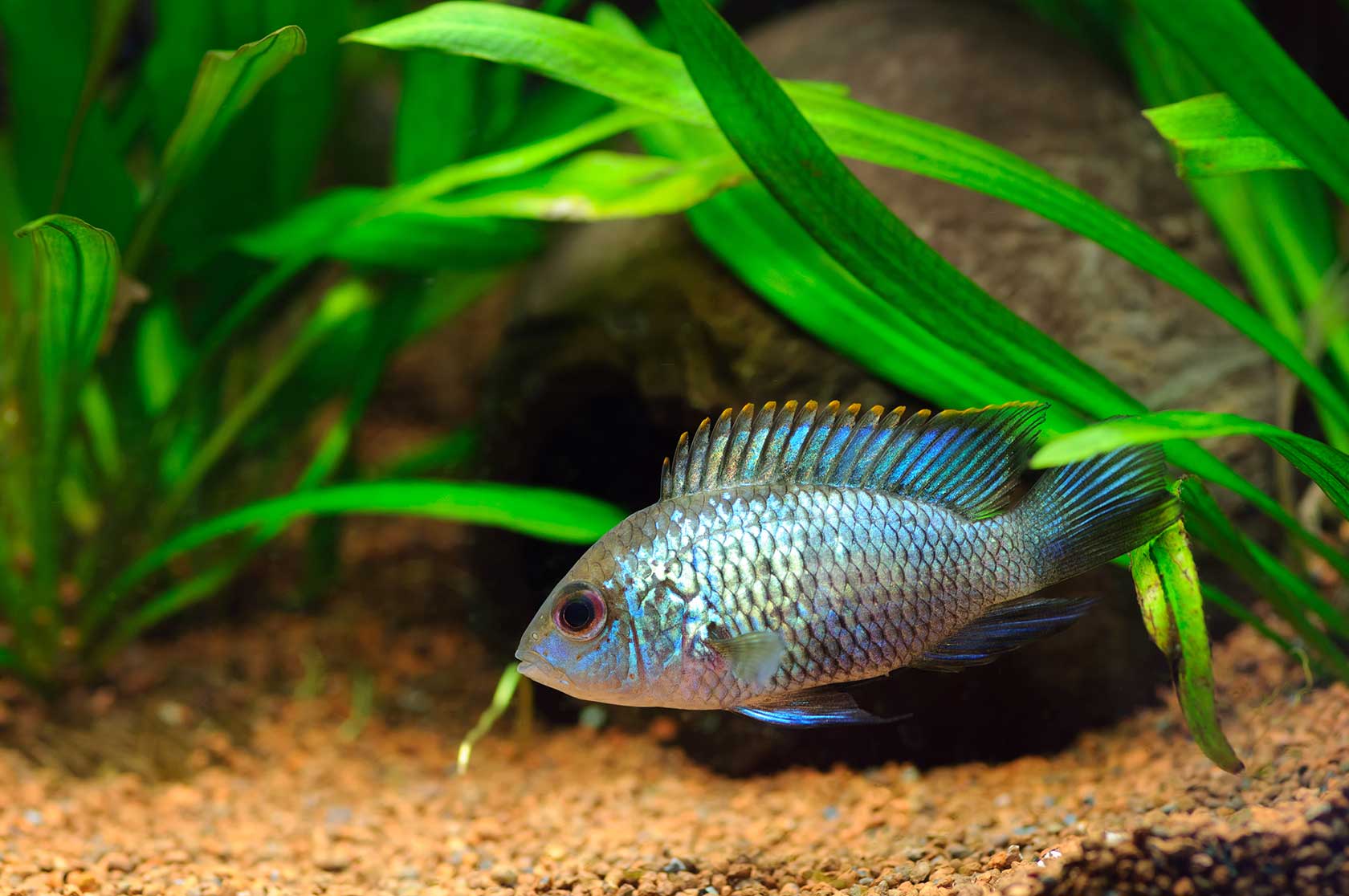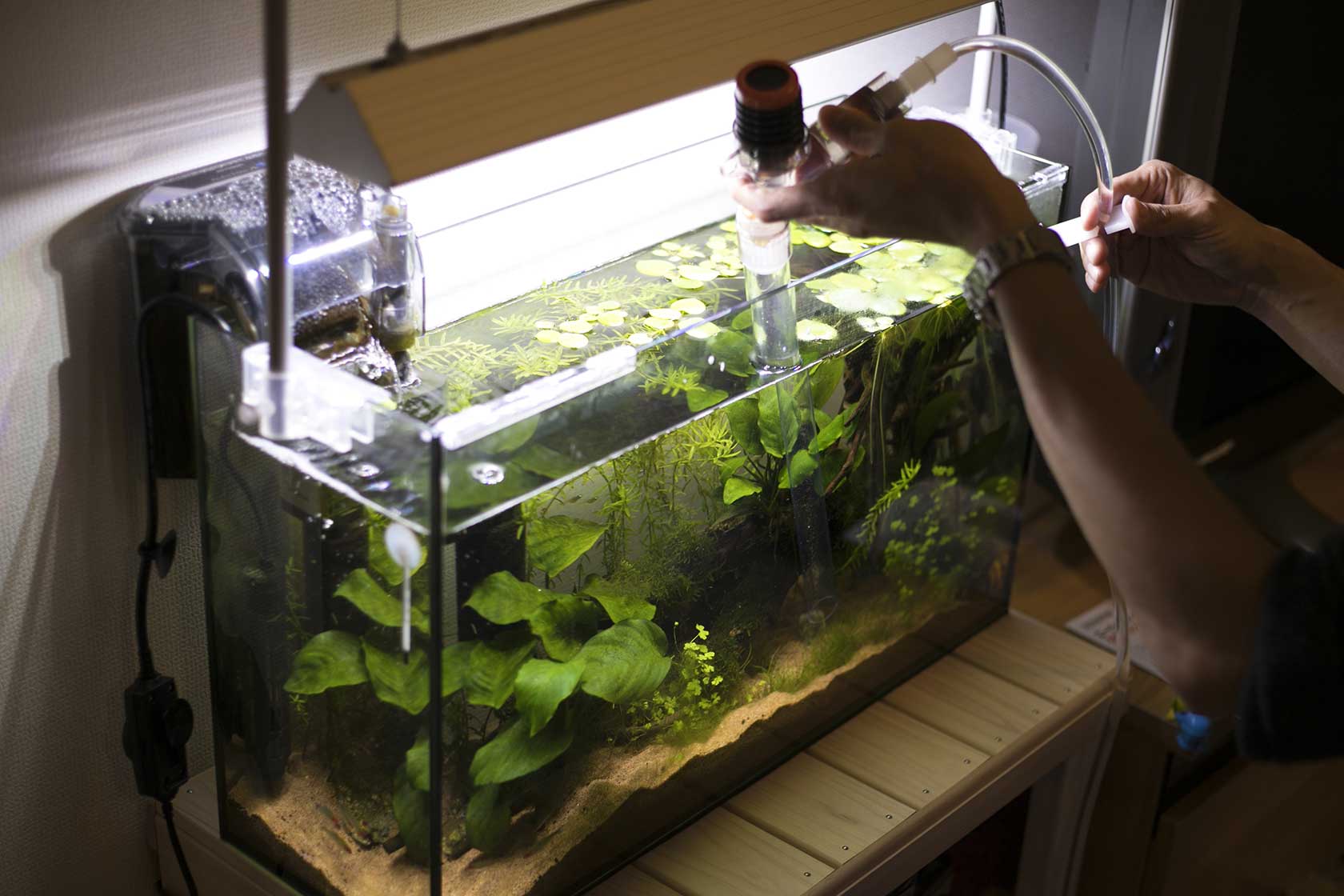Nothing brings beauty and tranquility to home, quite like an aquarium. However, setting up a fish tank can be a bit of a challenge, especially for beginners. It’s a little like setting up a colony in space; you’ve got to make sure to include the right conditions in your tank to foster life. Though it isn’t easy, a well-functioning tank full of healthy, happy fish is its reward. Here are some key tips for keeping an aquarium in your home.
-
Choose The Right Fish

It can be tempting to waltz into a pet shop and pick tenants for your aquarium based on looks alone. But be warned—that dazzling cichlid you’re eyeing is awful territorial. Do some research to make sure that you’re choosing fish that can cohabitate well. Fortunately, several low maintenance tropical fish, like guppies or tetras, are commonly available and suitable for beginners. If you aren’t sure where to start, the salesperson at the pet store should be able to recommend fish, and even stop you if you choose fish that won’t cohabitate! Also, learn about the space requirements for each fish you want to purchase to ensure your tank will have enough room.
-
Find The Right Tank

The tank you choose will be your fishes’ whole world. It’ll have a huge impact on your own space as well, so you want to make sure that you make the right choice. The typical rectangular aquarium is a recommended choice, as it provides a good balance of the surface area and swimming length for your fish. More aesthetically minded fish owners might find the black plastic rims on the top of most fish tank models unsightly. You can browse the Best Rimless Aquariums to find a sleek and affordable space to make your aquarium dreams a reality. Make sure to opt for a big enough tank, as overcrowding can be deadly for fish.
.tdi_67_892.td-a-rec{text-align:center}.tdi_67_892 .td-element-style{z-index:-1}.tdi_67_892.td-a-rec-img{text-align:left}.tdi_67_892.td-a-rec-img img{margin:0 auto 0 0}@media (max-width:767px){.tdi_67_892.td-a-rec-img{text-align:center}}
-
Cycle Your Water
Once your tank is set up, don’t immediately throw fish in there. First, you need to “cycle” the water. This involves introducing the nutrients and minerals necessary for supporting a healthy aquatic ecosystem. Many tanks will come with packets that introduce beneficial bacteria to the water, and adding a pinch of fish food and letting that break down can also do the trick. You should allow your tank around one week to cycle before introducing any fish to it. When adding fish to the tank, make sure to acclimate them to the tank temperature by letting them float in the bags you bought them in on the surface of the aquarium.
-
Change And Test Regularly
As fish go about their daily lives in the tank, the chemical composition of the water will change. It’s important to test your aquarium regularly to ensure the conditions still support a healthy ecosystem. Chemicals such as ammonia occur naturally in fish excrement, but a buildup can be toxic to your fish. Use test strips to monitor the pH levels and balance of chemicals in your tank. To prevent waste buildup in your tank, perform weekly water changes. You’ll need to replace around 1/3 of your tank’s water, and regularly clean the sides and bottom of the tank using a brush and siphon.
-
Manage Light And Food
The right lighting makes a well-designed fish tank stand out. But remember that the light is for your enjoyment, and not your fishes’. Unless you have a large number of plants in your aquarium, the fish can make do with a moderate amount of natural daylight. Leaving the light on for too long will encourage rapid algae growth, which makes your tank dirty and less hospitable to your fish. While plants do require more light, they act as natural filters, as well as hiding spaces for fish, and can keep algae growth in check.
Overfeeding can also result in more than ammonia or nitrates in your tank. Whatever food you put in stays there, whether it’s eaten by your fish or left to rot on the tank bottom. Fish typically don’t need more than one feeding a day, and you should only give them what they can finish within a few minutes.
-
Find A Retailer You Trust
When in doubt about proper aquarium practices, the best source is your local fish retailer. These individuals typically have expert knowledge of fish behaviors and needs and act as a great resource if you stumble into any issues. By following their advice and keeping these few simple tips in mind, you can derive hours of pleasure from maintaining a healthy aquatic ecosystem. Who knows, you might be inspired to become an expert yourself!

